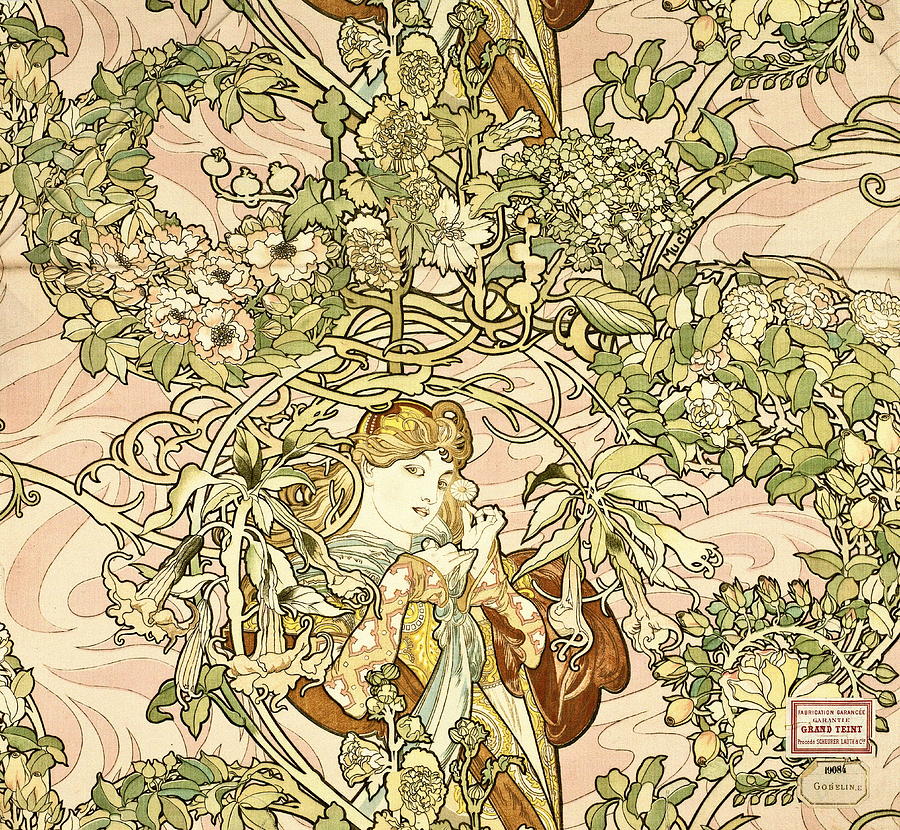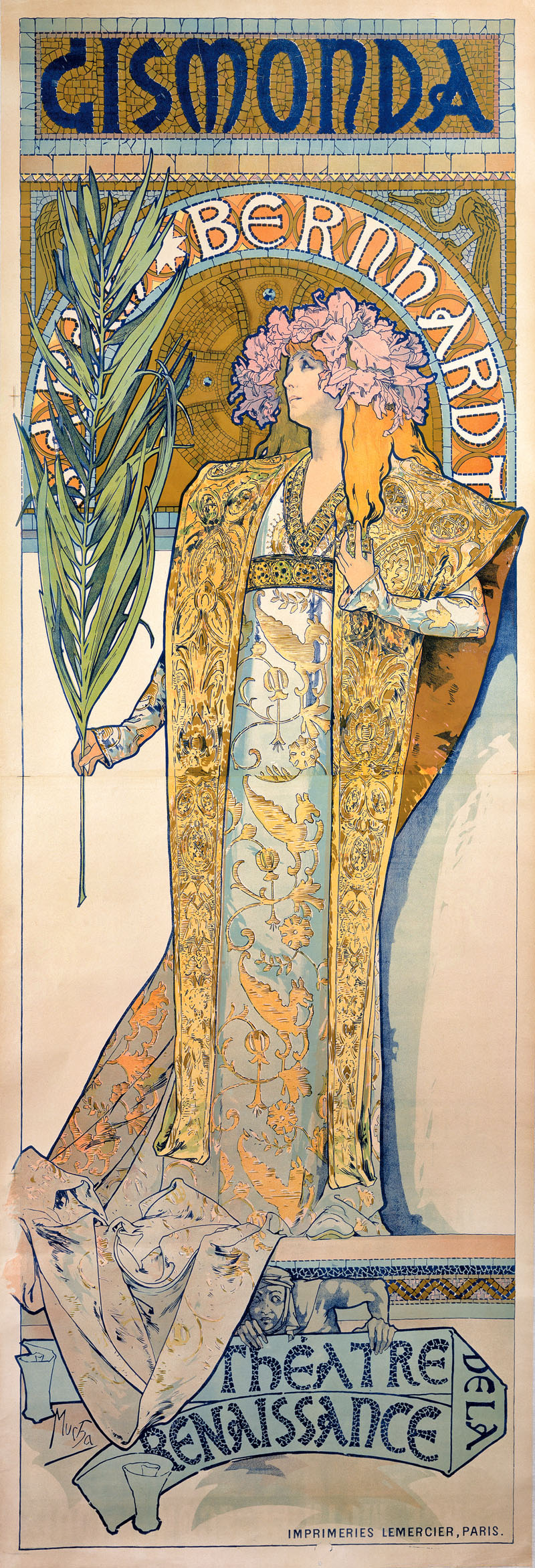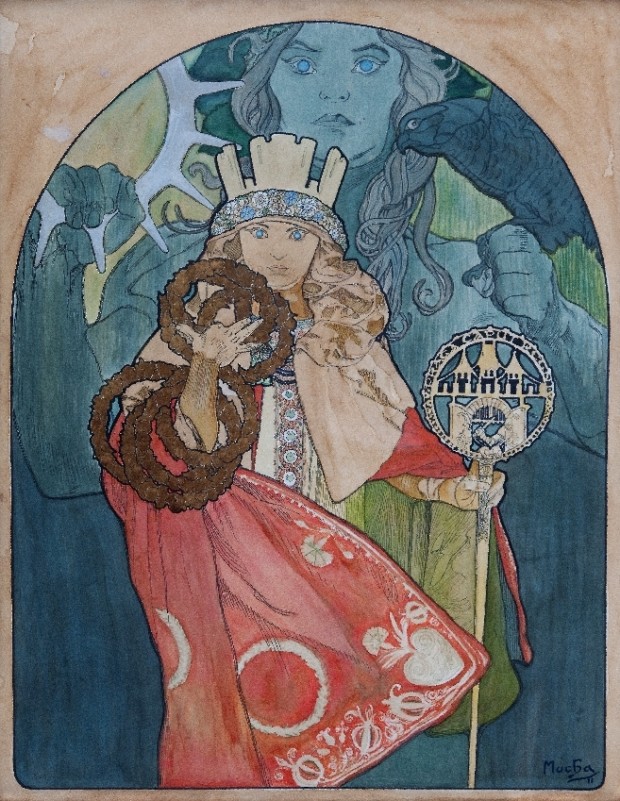Masterpiece Story: The Climax by Aubrey Beardsley
Aubrey Beardsley’s legacy endures, etched into the contours of the Art Nouveau movement. His distinctive style, marked by grotesque imagery and...
Lisa Scalone 27 October 2024
Alphonse Mucha is perhaps the artist most publicly associated with Art Nouveau. Today we explore the life and work of the Czech master.

Alphonse Mucha was born in 1860 in the Moravian town of Ivančice, in the modern-day Czech Republic. From an early age, Mucha loved painting and drawing. His first artistic job was designing decorations for a Moravian theatre company. Having trained as an artist at the Munich Academy of Fine Arts, Mucha traveled to Paris in 1887 to continue his artistic education. He took an illustration job at the magazine La Costume au Théâtre and also established his own studio in the city center.

Mucha’s big break came in late 1894 when, somewhat by chance, he ended up designing the hugely popular poster for Sarah Bernhardt’s theatre production Gismonda. After this success, Mucha developed an ongoing collaboration with Sarah Bernhardt on advertisements, jewelry, and theatrical costumes.

Art Nouveau’s infatuation with nature encompassed the seasons and this subject was perfectly expressed in Mucha’s 1896 series of that name. It depicts four beautiful women, each one set against a natural backdrop that evokes the mood and color of the season. Spring stands daintily among blossoms and birdsong; Summer wears a garland of poppies; Autumn harvests wild fruits and chrysanthemums; Winter wears a cloak to insulate herself from the cold and snow.

Mucha’s distinctive style became sought after by advertisers and was much imitated in the rapidly growing mass media of the period. Mucha created advertisements for companies such as the biscuit firm Lefèvre-Utile and the champagne maker Ruinart Père et Fils. Many of these commissions contained his signature elements: women with long curly hair (some of Mucha’s critics used to call the hair “macaroni”), organic forms, and soft colors, especially gold.
Despite the great fame that Mucha’s commercial art brought him, he preferred to see his work as personal, spiritual, and national. Mucha asserted himself as an artist capable of more than just Art Nouveau style and in his later career, he focused more on personal projects.
DailyArt Magazine needs your support. Every contribution, however big or small, is very valuable for our future. Thanks to it, we will be able to sustain and grow the Magazine. Thank you for your help!